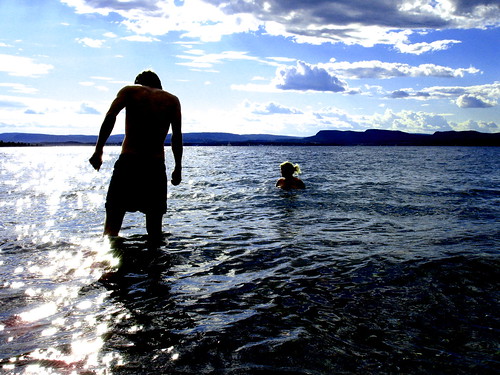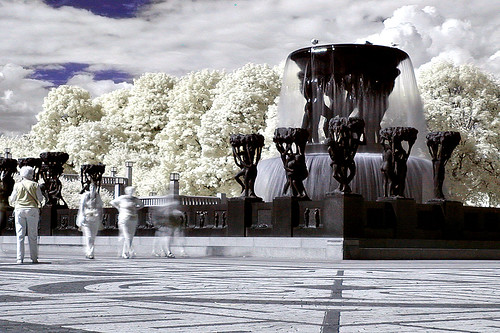I went to Moscow to plan an ad-serving implementation but they went to war as I arrived. I missed the war but met smart, interesting people.
I suspect that I am in the middle of the one of the more (if not, most) interesting two weeks in my working career. Yesterday, I returned from Moscow some 1500 miles to the north east of where I type this and tomorrow I am flying 4800 miles, or so, in the opposite direction to Seattle. Russia to the USA. I could be running my own little cold war had Mikhail Gorbachev not done the world a service and taught us all a new word, perestroika, some 21 years ago. It’s possibly my only word of Russian, although I am reminded that we were all happy for glasnost freedoms; even if that meant 30,000 Muscovites had to queue for a beef patty in January 1990 in some kind declaration of the freedom to Supersize ones self. I suspect the Nobel Peace Prize committee didn’t cite Pepsico’s opening of a Pizza Hut when making the award to Gorbachev in 1990. Anyway, it appears the citizen’s of Moscow have, since dissolving the USSR on Christmas Day 1991, embraced consumerism and the market economy to such an extent as to make the upcoming Christmas Day 2008, Moscow-style, a very expensive affair indeed. Truly, the most expensive place I have ever visited. I imagine American Express do very well out of it all, much to the consternation – one imagines – of any members of the Politburo who may be looking down on this megacity.
As I left Heathrow on a, if I am honest, patched-up jet, some parts of the Russian army were taking a less tourist-like approach to Georgia’s South Ossetia, some 3700 or so miles from Moscow. Tbilisi and Moscow have disputed this territory for years. Depending who you ask, some may tell you that the Republic of South Ossetia is a country in itself but I think you’ll, generally, only get that answer from the people around about Tskhinvali (that’s South Ossetia’s capital should your geo-political globe not be to hand right now). In case you hadn’t worked it out, this isn’t an essay on political tensions in the South Caucasus but the dispute is relevant as my parents currently reside in Tbilisi, Georgia’s capital. In a nutshell, I fly into Russia one way while my parents evacuate ahead of an advancing Russian army. Less than a week ago they were on a bus heading to Yerevan watching Georgian tanks roll back towards me.
History and geography lessons aside, the thought that the country you are visiting is, regardless of a legal definition, at war with another country doesn’t fill your heart with joy or put a spring in your step. However, and this is the unsatisfactory climax to which I have been building these opening paragraphs, the people I met in Moscow were, unfailingly, concerned about my parents’ safety and went out of their way to help me get status updates. I image ringing the international operator and asking for trunk line to Tbilisi so I can ask about the weather would have got me on some kind of watch list. And that sums up my experience of Muscovites: warm, interested and friendly.
I was there to work on a digital advertising project with some people from a major publisher and, in the course of the last week, I’ve met with a large number of people generating digital content from news and sport to managing social media platforms and finding ways to generate advertising interest. The experience has, like many of these projects, shown me that the digital advertising business is truly global and facing more-or-less the same challenges and pressures. Interestingly, because one of the key drivers of this project was to increase display advertising relevancy without the need to serve-up more and more ad placements, we had some detailed conversations that expanded on my thoughts to the mobile conference earlier in the year: understand that each member of your audience is unique and, with the right infrastructure, digital advertising shouldn’t need to drown out the real content they are there to read so that you can make some return.
Hypothesising digital advertising’s future wasn’t the only reason for my visit. I needed to evaluate the the ways in which the technology that I represent fits into an existing workflow and how disruptive a new system implementation may be. The online advertising world has grown, in the fourteen or so years that I have been involved, organically. By that I mean we learnt lessons from our initial trials (hey, I logged on to hard-code ads on Christmas Day many years ago) and gradually adapted them. Software that solved problems ten years ago is still being actively developed today and being taken in many more directions than we could have imagined. As a result I often find customer processes that developed alongside the advancing technology are unique, (occasionally) misunderstood internally and inefficient: systems that too often rely on knowledgeable human gate-keepers or spreadsheets tucked on a machine in the corner. It’s an issue that I see the industry as a whole addressing in different ways but one that acknowledges what we refer to as ad-serving technology needs to integrate into wider business systems. One of the most delightful parts of my visit this week was that the customer I met had a complete understanding of their own processes before I even sat down and I was able to map them onto our products & plans with relative ease.
Although we had a lot of work to complete in the days I was there, and in spite of almost stranding myself in the Microsoft Moscow office for the night (tip: pre-book taxis), I managed to view Red Square and the Kremlin at night. I bought, what appeared to be, the world’s most expensive Beef Stroganoff (but I was sat looking at the Kremlin at the time); saw how the locals take a taxi without having to re-mortgage their house and got an all too brief guided tour (although we didn’t get to ride in the ‘special’ lane). I made it back to the airport – and to the sight of a almost new bmi plane – convinced that the digital entrepreneurs in Moscow will be creating some amazing products in the next few years and that they, perhaps better than some organisations I’ve worked with over the years, understand that developers need to eat. Such insight means that finding the way to make products efficient and advertiser-friendly is central to their thoughts. I’d love to go back but, perhaps, I’ll wait for hostilities to cease.
And now to pack for that flight in the opposite direction. I imagine my own internal war, the one where the jet-lag armies move in on the disputed territory of sleep, will be declared some time on Monday. In the meantime, my thoughts are with all sides impacted in South Ossetia and hope they find a speedy resolution.
Disclaimer: the views here are my own and are not necessarily the opinions of my employer (who sent me) nor customers (who hosted me). You have read the full disclosure, haven’t you?











